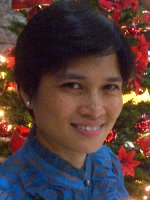Philippine Culture: January in the Philippines
Every month, starting January this year, I shall be doing a brief description on what usually takes place in our country in a particular month. This should give visitors some insights into Philippine culture and our practices which make us a truly interesting country and race.
[an error occurred while processing this directive]For January, Filipinos literally start the year with a bang. A few minutes before midnight, firecrackers and fireworks start. Filipinos (and I suppose this has something to do with our Chinese relations and connections) believe that lighting firecrackers (with the noise and all) would drive away evil spirits and elements. Though this makes our new year celebrations noisy and colorful, the day after, we are also always confronted by reports of injuries and deaths but these do not stop us from doing the same thing, year after year.
Aside from lighting firecrackers and having fireworks, there are other practices which are all believed to bring good luck, fortune, and prosperity in the new year. These practices would range from keeping all your lights on (for a bright future I suppose); to wearing polka dots; to eating 12 round fruits (e.g. grapes, oranges). People are likewise careful about what they are doing at exactly 12 midnight as some people say that that is how your whole year will be like. So, if you are caught sleeping at this time, most likely your year will be slow and lacking in activity. Some people jump at 12 midnight as they believe this will make them grow taller and people pay off their debts in the hope that they will not be saddled with debt throughout the year.
Filipinos are known for their close family ties so the start of the new year usually finds families coming together for a good meal known as media noche. This is the new year counterpart of Christmas' noche buena.
At the start of the year, when you watch TV or when you read the newspapers, you will usually find features focusing on important events which took place in the previous year. Guests/resource persons will also be invited to give their predictions and forecasts for the new year.
Older people say that we should keenly observe what the weather is like for the first 12 days of the year. This, according to them, (and I don't know what the basis would be), would be an indication of how the weather will be like in the coming months. The weather for January 1, for example, would indicate what weather will be like in January; January 2 for February, and so on.
January 9 is the feast of the Black Nazarene in Quiapo. This is a statue from the 17th century which made its way from Mexico to the Philippines. People converge at Quiapo, mostly men who come barefoot, to join a procession. This year, it was estimated that about half a million joined the procession. People say that how the procession goes is also an indication of how the year will be for the Philippines. If the procession is peaceful and orderly, then the year should be a good one also. If the procession does not go smoothly and if people are injured in the process, then the new year will be a difficult one too.
The third Sunday of January is the feast of the Sto. Niņo or the Christ Child. In the Philippines, I suppose, if you enter a Catholic household, you are bound to find an image of the Sacred Heart and the Sto. Niņo. In our country, generally speaking, children are well-loved and are looked after to the best of their parents' or relatives' abilities. This probably explains our devotion to the Sto. Niņo, not to mention the reminder that it gives us to be child-like in faith. Some Catholics even do the 9-hour novena (you pray the same prayer, every hour, for nine hours, just one day) to the Sto. Niņo for certain requests and this is known to be one of the most effective novenas and I have proven this personally.
As for the festivals in our country this month of January, there is the Ati-atihan in Kalibo, Aklan from January 16-22 where participants paint their bodies black and don colorful costumes; the Sinulog, every third weekend of January in Cebu -- which is actually done in honor of the Sto. Niņo; and the Dinagyang in Iloilo City on the 4th weekend of January.
[By Angelica Viloria | Thursday, January 27, 2005] [an error occurred while processing this directive]

Copyright © 2001-2012 by Angelica Bautista Viloria. All Rights Reserved.
Previous entry: "Board Games for the Family: The Game of Life by Milton Bradley"
Next entry: "Children's Book Review: Franklin in the Dark by Paulette Bourgeois"

